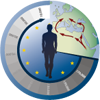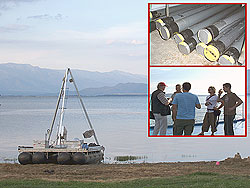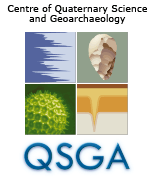Our latest and very successful coring campaigns at Lake Prespa and Lake Dojran in the Balkans took place in summer 2011. We recovered a long sediment core (>7 m) from Lake Dojran (F.Y.R. of Macedonia/Greece), a shallow and so far poorly investigated transboundary lake that is, however, in the focus of past climate change.
Additionally, we were able to extend our existing record Co1215 from Lake Prespa (F.Y.R. of Macedonia/Albania/Greece) by about 2 m to 17.76 m in total. These new cores have already been investigated using geophysical (magnetic susceptibility, XRF), geochemical (CNS, TIC, TOC), isotopic, ostracod, diatom and/or pollen analyses. According to our age model, the Prespa archive clearly reaches back to MIS 5 and thus provides an excellent continuous record for our palaeoenvironmental reconstructions.
The Balkans, a key region in the eastern trajectory of modern human migration to Europe, can therefore offer invaluable information regarding the environmental factors that facilitated or hindered the expansion of modern humans out of Africa during the last Glacial Cycle.
















